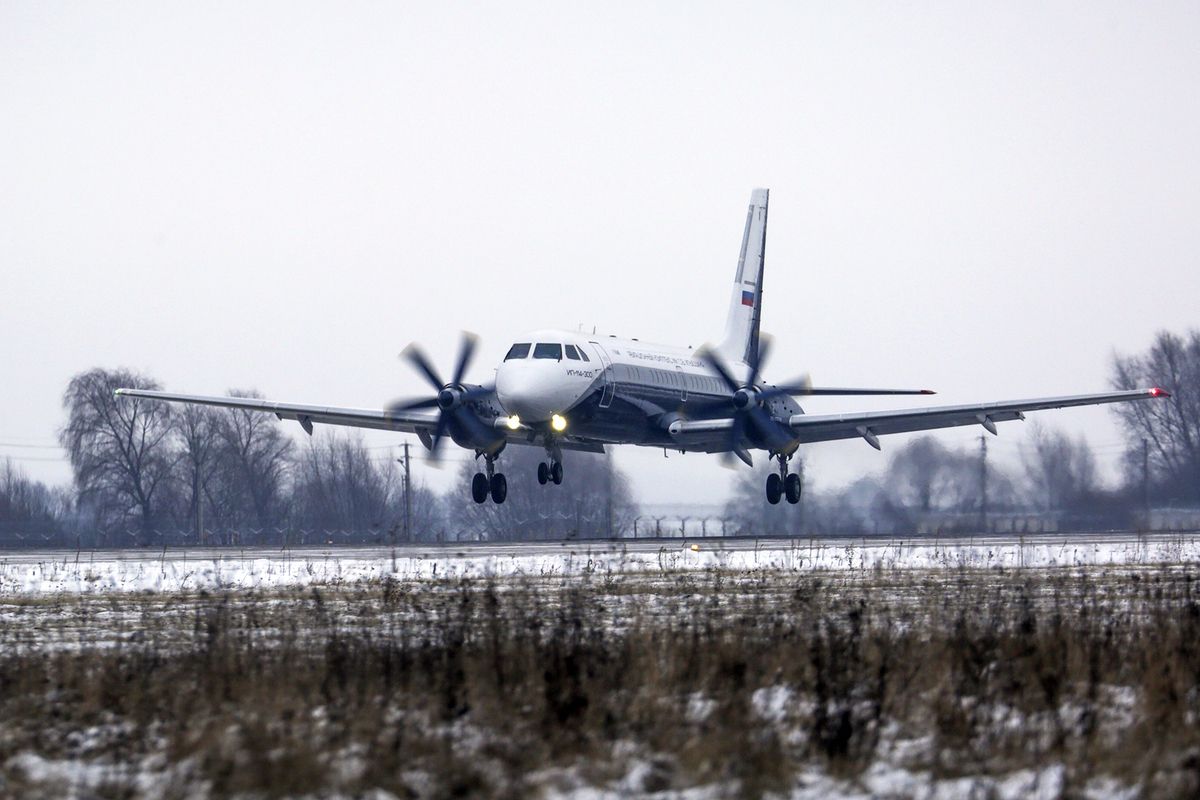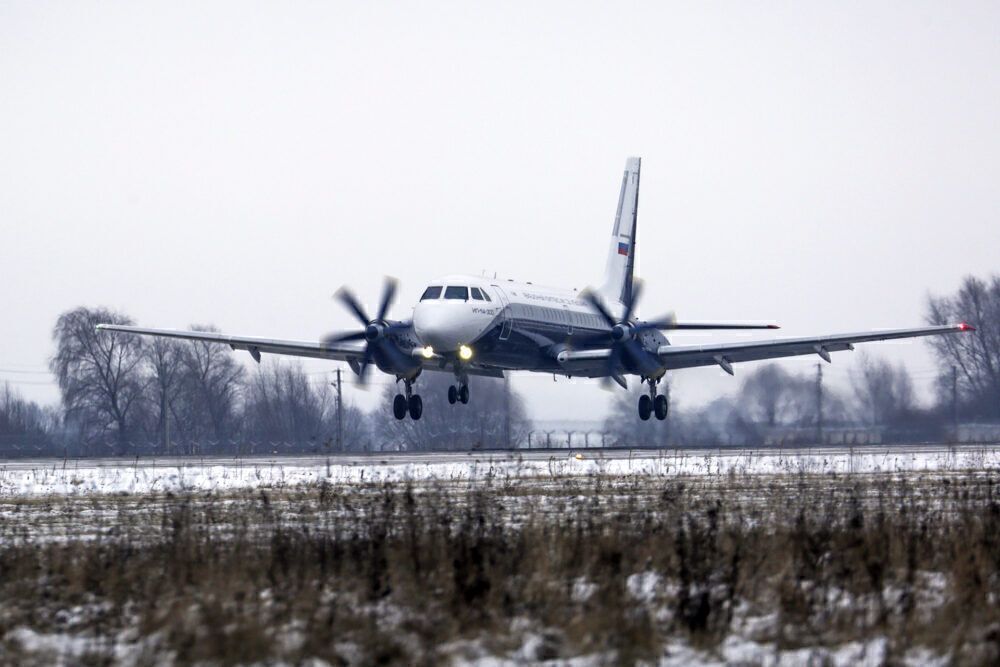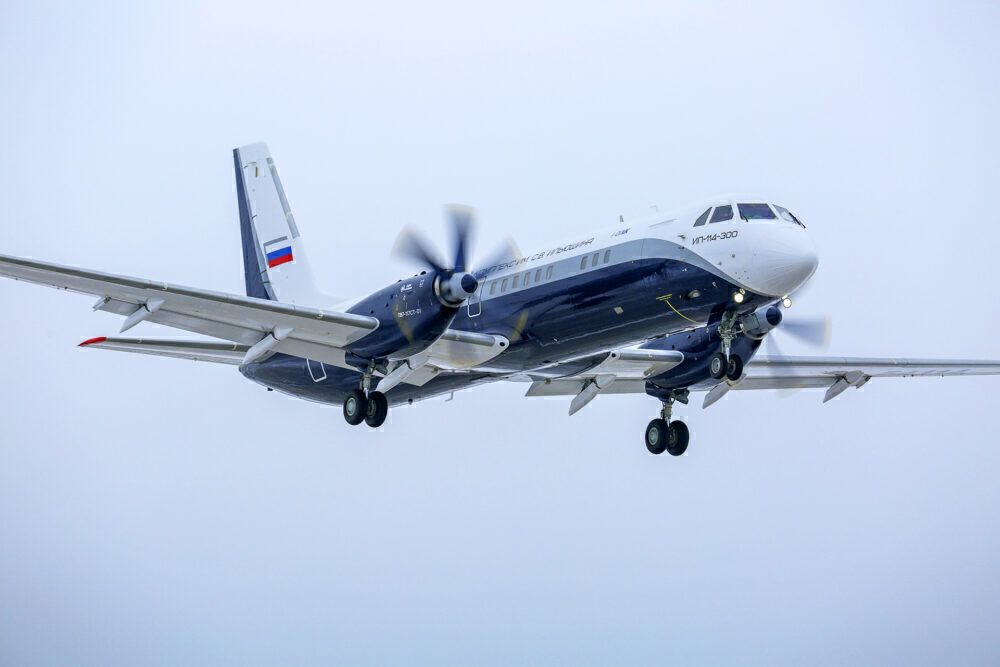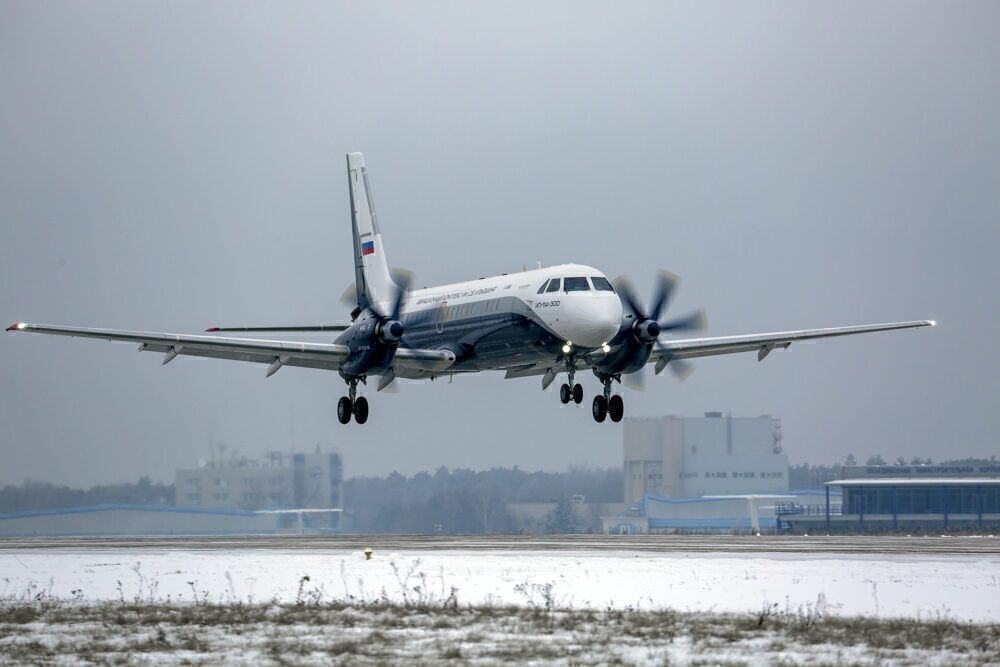The first flight of the Ilyushin IL-114-300 took place in December 2020 to set up the start of the test program at the turn of the year. These test flights of the twin-engine turboprop are checking the plane's controllability, operability, power plant, glass cockpit systems, and radio communication system. After the completion of the factory test phase, the model will begin certification tests. Amid this progress, Simple Flying caught up with Russia's United Aircraft Corporation (UAC), which is part of the Rostec Corporation, about what to expect with the upcoming aircraft.
A tailored approach
The Ilyushin Il-114 series traces its roots back to 1990 when the first variant flew. However, there is plenty of flexibility with the new version. From seating configuration to external additions, the teams behind the plane have been holistic with their approach.
In the basic -300, the passenger capacity is 64 seats, but depending on the requirement of the airline, the layout of the compartment can be offered in options from 68 to 42 passengers. The latter option comes with enlarged baggage compartments.
There are also operational maintainability benefits to be had as the plane allows for quick and easy access to all structural elements and assemblies provided for by the maintenance program. Furthermore, the aircraft's systems have built-in monitoring tools that ensure performance checks and troubleshooting of each separate system.
Further implementations
Other additions with this model include a changed sweep angle of the wing. This will give it greater lateral stability and will improve the aircraft's overall flight performance.
The IL-114-300 is equipped with the latest version of the TV7-117ST-01 turboprop engines with a takeoff power of up to 3100 hp. UAC shares that the power plant together with the engine includes a new propeller and a new automatic control system using a combined modernized control unit for the engine and propellers. The combined control unit makes it possible to maximize the potential of the characteristics of the engine and propeller. In general, the efficiency of the power plant would be increased here.
Further, the plane will be fitted with modern digital flight and navigation equipment. It will also have radio communication systems, external lighting equipment, and a new ice protection system.
Stay informed: Sign up for our daily and weekly aviation news digests!
Valuable versatility
UAC explains that technical characteristics of the -300 allow it to be operated even with a weak airfield infrastructure. For instance, it will be utilized well at short and unpaved runways. Notably, the plane has a built-in airstair for boarding and alighting passengers, which could work well in sensitive environments.
Operators such as those serving at the harsh terrains found across Russia in the winter will be keeping a close eye on the progress of the IL-114-300. The aircraft is being built with snow-covered and frozen runways in mind and will be certified for operation in low temperatures.
Moreover, the navigation and communication equipment have been adapted to work in high latitudes. Undoubtedly, the more efficient ice protection system, new auxiliary power unit and air conditioning system will prove useful for both the crew and passengers even in extremely cold conditions.
Having to adapt
The Ilyushin Il-114 is manufactured at the industrial sites of UAC and was developed by the Ilyushin Design Bureau. Meanwhile, the engines were made by the St. Petersburg-based UEC-Klimov, and the digital flight and navigation kit was developed by the Concern Radio-Electronic Technologies.
Like the rest of the world, Russian aviation had been hit hard by the conditions of the global health crisis. However, the national industry continued to work hard to get through the challenges with its programs amid the harsh climate.
"The pandemic and the related restrictions primarily hampered our work on our international projects. We experienced difficulties in hiring and sending specialists, logistics, supplies, both import and export. However, all possible measures were taken to mitigate the risks in time," Viktor Kladov, Director for International Cooperation and Regional Policy of the State Corporation Rostec, told Simple Flying.
"By the end of 2020, we had fulfilled all key obligations under the main civil programs and export contracts. Financial performance continued to rise even amid the pandemic. According to preliminary data, Rostec's consolidated revenue may grow by 1.5-3% compared to 2019, to 1.79-1.84 trillion rubles, and in plans for 2021, it may exceed the level of 2 trillion rubles. In other words, the corporation is in a stable position."
Altogether, with testing well underway, the IL-114-300 is on course to become a welcome introduction in Russian aviation this decade. Siberian operator Polar Airlines has provisionally signed to take three units. Meanwhile, another Siberian carrier, KrasAvia, has expressed interest. There are nonetheless many local and military outfits across the region that will value the capabilities of the aircraft.
What are your thoughts on the IL-114-300? Which airlines do you feel would suit the aircraft? Let us know what you think in the comment section.




